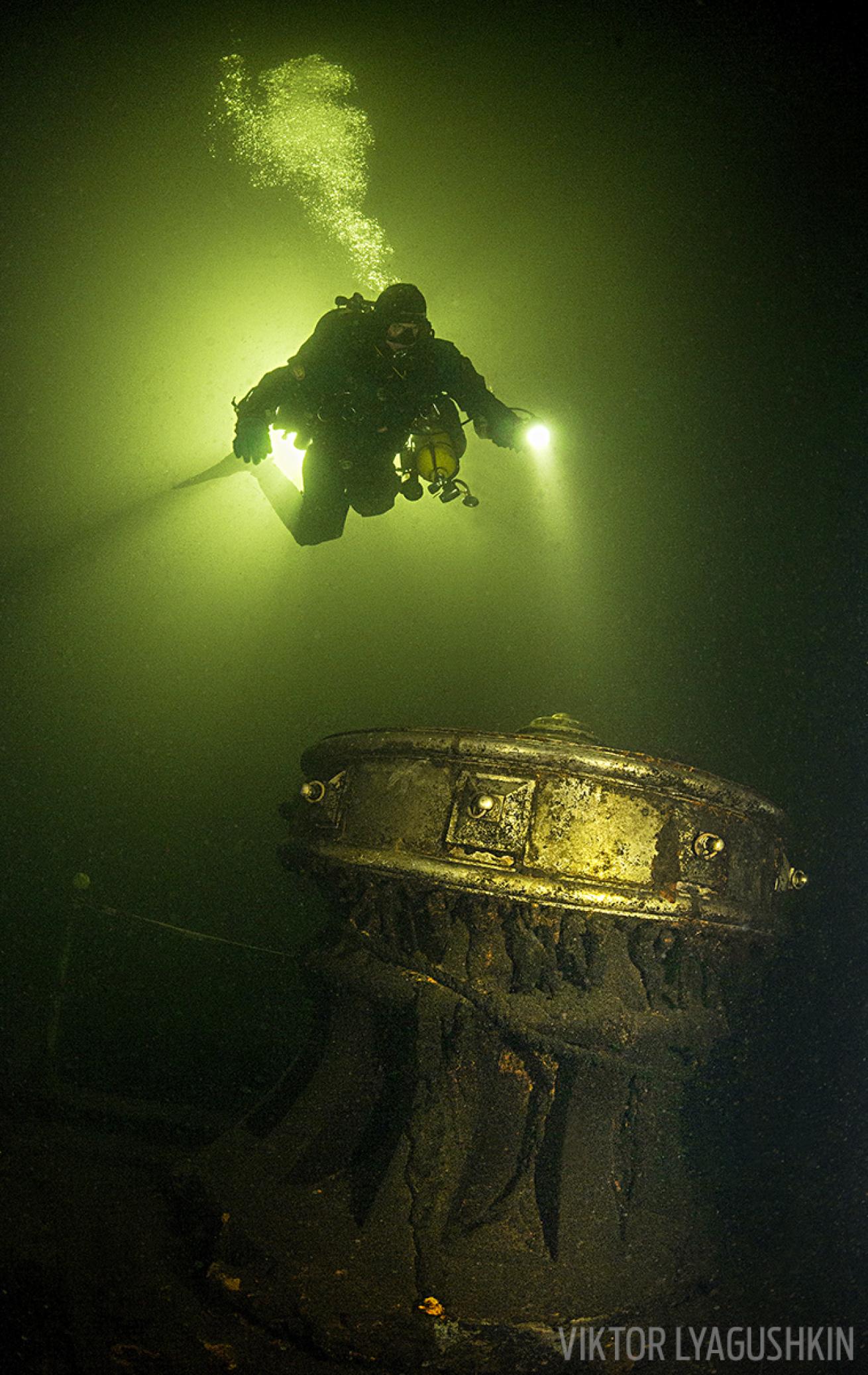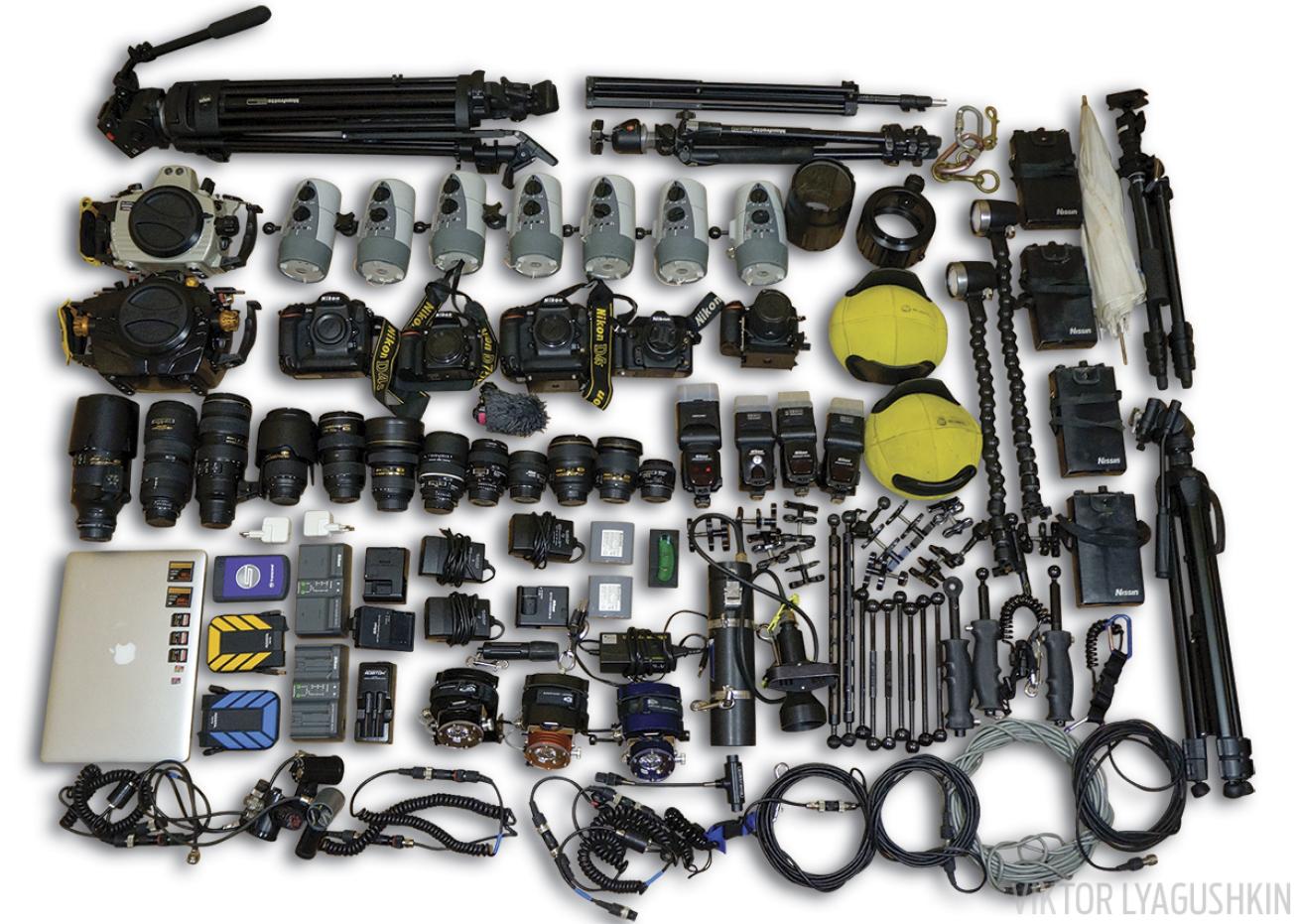Scuba Diving in the Baltic Sea: Dive Conditions, Gear and Tips for Photography

Viktor LyagushkinThink you can handle the freezing water and low visibility to dive the Baltic Sea?
More Photos and the Full Oleg Story
Frigate Oleg is a national heritage site; the only way to visit is to be a Russian citizen and to find an archaeological expedition to join. Nevertheless, there are a lot of wonderful wrecks at the bottom of the Baltic Sea that divers can visit — however, the water is cold, visibility is very low, and storms can come suddenly and mess up your last deco stop. Or the weather could be very bad and deny you the opportunity to dive.
The Baltic is best for those who really love these piles of wood and understand they are priceless. Diving other Baltic wrecks from Russia is complicated because many permissions are needed, and foreigners cannot obtain all of them. But there are several countries that border the Baltic other than Russia: Poland, Sweden, Germany and others. It can be easier to organize wreck diving there, and visibility in their regions is a little better. You should be certified for normoxic trimix, drysuit and wreck-penetration diving.
When To Go:
May to November is best, although the Baltic is stormy and there are not many days of good weather. If you are not afraid of the cold, you may do ice dives if you are trained. A lot of archaeological work is done in winter under ice because the work is less hampered by storms.
Dive Conditions:
Water temps are 37 to 48 degrees F, with visibility from 3 to 22 feet on the Russian side and up to 40 feet in other parts of the sea.
Dive Operator:
Demersus Dive Club, demersus.ru/en
Photography Tips for the Baltic Sea
- You will need a team of highly organized support divers who dedicate all their time underwater to the shoot.
- Discuss all the details on the surface and do some preliminary training beforehand.
- Be ready for bad viz.
- Be ready to spend much more time planning and waiting on ship or shore than you will diving, because of bad weather.
- Be ready to work at depth because shallow wrecks tend to be broken up by storms.

Viktor LyagushkinThis project was done with a Nikon D3S and D3X in Subal housings, and many, many accessories. National Geographic photographer Viktor Lyagushkin’s basic kit consists of a Nikon D4S, Nikkor 16mm/2.8 fisheye, Subal housing, Ikelite DS160 strobes, and Scurion lights.










